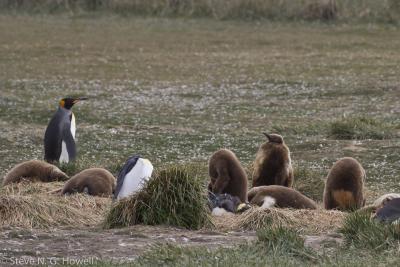Oman
-
Nov 20 to Dec 1 2025
Fabrice Schmitt
Tour Price to be Determined
Tour Price to be Determined
The Sultanate of Oman – one of the most attractive, unspoiled, and safest countries in the Middle East – offers an extraordinary wealth of birds and an exceptionally pleasant, welcoming, and relaxed atmosphere in which to enjoy them. Located on the southern tip of the Arabian Peninsula, and with over one thousand miles of coastline, Oman’s varied habitats host a diverse selection of birds with significant elements drawn from the Europe, Asia and Africa. Offshore, Oman’s clean, fish-rich waters support an abundance of seabirds.
We’ll sample the best that this fabulous country has to offer – from the riches of the north coast and the wader-packed mudflats of the east to the hidden oases of the Empty Quarter and the almost Afrotropical fauna of the south.
Day 1: The tour begins this evening in Salalah. Night in Salalah.
Days 2–6: We’ll spend five days in the southern region of Dhofar. Every year, during the summer monsoon season (June to October), the area is cloaked in mist from the warm Arabian Ocean. These misty summer conditions make the Dhofar region one of the greenest in Arabia. The unique conditions mean this area is home to a number of Arabian endemics, such as Arabian Grosbeak, Arabian Partridge, Arabian Warbler, Arabian Wheatear, and Yemen Serin. We’ll visit a number of sites to search for these from impressive sinkholes to secluded springs. We’ll spend some evenings searching for two other Arabian endemics: Arabian Scops-Owl and Arabian Eagle-Owl. Staying out after dark gives us the added chance to encounter other creatures of the night, such as Arabian Wolf, with packs often howling from the hillsides as we wait for the owls to begin calling.
The region is also home to a number of East African species whose distribution creeps along the south Arabian coast, such as Cinnamon-breasted Bunting, Abyssinian White-eye, Black-crowned Tchagra, African Paradise Flycatcher, Blackstart, Tristram’s Starling, Singing Bushlark, and Bruce’s Green-Pigeon. Many of these are widespread in Dhofar’s lush wadis and ayns. Spotted Thick-knee though widespread can be difficult to locate by day but we’ll visit a site where we can view resting birds down to just a few yards. Raptors abound, and we should find a host of eagles – Steppe, Imperial, Bonelli’s, Greater Spotted and, if we’re lucky, Verreaux’s. Other birds of prey such as Oriental Honey Buzzard and Yellow-billed Kite are sometimes spotted from the roadside.
The southern Omani coast has many khawrs, coastal lagoons cut off from the sea by sandbars. These are home to a host of waders, wildfowl, gulls and terns such as Temminck’s and Little Stints, Eurasian Wigeon and Northern Pintail, Slender-billed Gull, and Lesser and Greater Crested Terns, as well as other sought-after species such as Medium Egret, Abdim’s Stork and maybe a rarity such as a Cotton Pygmy-Goose or a Small Pratincole.
Oman has a long history of ocean travel and on one day we’ll take to the seas for a pelagic where we’ll hope to connect with Persian Shearwater, Jouanin’s Petrel, Red-necked Phalarope, Bridled Tern, Masked and Brown Booby, and numerous dolphins and turtles. Another day will be spent inland, in the southern desert of Oman, looking for species such as Chestnut-bellied and Lichtenstein’s Sandgrouse, Asian Desert Warbler, Sand Partridge, Nile Valley Sunbird, and Hypocolius. We’ll also visit Salalah’s souk where we’ll have the chance to buy frankincense and other Arabian delights. Nights in Salalah.
Day 7: We’ll travel north from Salalah to Duqm, stopping en route, where roadside birds could include Long-legged Buzzard, Greater Hoopoe-Lark, or sandgrouses. Night in Duqm.
Day 8: From Duqm, we’ll continue north to Barr Al Hickman, a large bay on Oman’s east coast and home to tens-of-thousands of waders, include Crab Plover and, if we’re lucky, Great Knot. We can also expect to see Terek, Marsh and Broad-billed Sandpipers, Greater and Tibetan Sand-Plovers and thousands of Bar-tailed Godwits, Common Redshanks, Eurasian Curlews and Eurasian Oystercatchers. Terns frequent the area, including Gull-billed, Caspian and Little, while flocks of Greater Flamingos feed in the channels and Isabelline Shrikes and Desert Wheatears feed around the fisherman’s huts on the shoreline. Exactly where we’ll go will depend on the state of the tide and viewing conditions at that time of day. Night in Mahoot.
Day 9: We’ll spend the morning at Barr Al Hickman catching up with any species we missed the previous day before heading inland to Nizwa. If time allows, we’ll visit Nizwa’s famous date souk. That evening we’ll head out for a nearby wadi, looking for Plain Leaf Warbler, Lesser Whitethroat, and Menetries’s Warbler. An after-dark search for Omani Owl is possible. Night in Nizwa.
Day 10: We’ll leave Nizwa and head for the north coast, looking for species such as Indian Roller, Brown-necked Raven, Lappet-faced Vulture and Persian and Hume’s Wheatear en route. Later we’ll drive to the far northwest reaches of Oman, where we’ll finish the evening looking for Variable Wheatear, Namaqua Dove, Striolated Bunting, Arabian Babbler, Arabian Green Bee-eater and Eastern Black Redstart. Night in Sohar.
Day 11: The north coast of Oman is home to a wintering population of Pallas’s Gull, which we’ll search for during the morning. We’ll also keep an eye out for Collared Kingfisher and Sykes’s Warbler, both of which maintain small, isolated populations in northern Oman. The north of Oman is also home to a number of Indian species that we won’t have seen so far such as Purple Sunbird, Indian Silverbill and Red-wattled Lapwing. We’ll also check football pitches – rare patches of green – for Water and Red-throated Pipits, Eurasian Hoopoe, and Isabelline Wheatear.Night in Muscat.
Day 12: For our last morning, we will visit some wetlands close to Muscat, where previous visits have revealed Ferruginous Duck and White-tailed Plover. We will be back at our hotel mid-morning for final packing, and then will transfer to the Muscat International Airport where we will have our last lunch together. The tour concludes at 2 PM at the airport for our flights home.
Note: The information presented here is an abbreviated version of our formal General Information for Tours to Oman. Its purpose is solely to give readers a sense of what might be involved if they take this tour. Although we do our best to make sure that what follows here is completely accurate, it should not be used as a replacement for the formal document which will be sent to all tour registrants, and whose contents supersedes any information contained here.
ENTERING OMAN: In 2023, citizens from the US or UK could travel to Oman without asking for a visa before departure, if they were staying in the country no longer than 14 days. For a stay between 14 and 30 days, Omani visa will be only available in advance online at https://evisa.rop.gov.om/. Pricing for e-visas for a one-month stay is now OMR20 ($52). Note: Date of entry into Oman must be within 1 month of visa approval, so do not apply for it too early!
Evidence of yellow fever immunization is required if the traveler enters from an infected area. For further information on entry requirements, contact the Embassy of the Sultanate of Oman, 2535 Belmont Road N.W., Washington, D.C., telephone (202) 387-1980, 1981 or 1982. You may prefer to use a visa service; we recommend C.I.B.T. Visa and Passport Service www.cibt.com.
It is always a good idea to take photocopies of your passport, visa, and air ticket with you when traveling abroad. They can prove invaluable in helping you get replacements if your original documents are lost or stolen. You should pack the photocopies separately from the originals. Unpacking the minibus at the roadside to get at one passport can be very time-consuming!
There is no problem entering Oman with optics, although border agents may wish to look through them and check them, particularly telescopes. Omani police and border agents are typically very friendly and checks generally don’t take more than five or ten minutes.
COUNTRY INFORMATION: You can review the U.S. Department of State Country Specific Travel Information here: https://travel.state.gov/content/travel.html and the CIA World Factbook here: https://www.cia.gov/the-world-factbook/. Review foreign travel advice from the UK government here: https://www.gov.uk/foreign-travel-advice and travel advice and advisories from the Government of Canada here: https://travel.gc.ca/travelling/advisories.
LANGUAGE: The national language in Oman is Arabic but English is also quite widely spoken in urban areas. We will be accompanied on our tour by an Arabic-speaking guide.
CLIMATE: It is generally warm-to-hot and dry in during the tour dates, although the south can be more humid. Temperatures range from lows of 16-20°C (63-68°F) early morning to daytime highs of 30-38°C (88-100°F). Rain is unlikely. Most days will be clear and sunny with occasional high clouds.
PACE OF TOUR: The tour is not a strenuous one but in a number of places we will walk on stony desert, up rocky valleys or over soft sand and a fair amount of general walking is required in order to participate fully. We always start early, usually around 6 AM, to take advantage of the cooler early mornings, and on one morning we will have an earlier start at 4:30 AM to drive to the location for the rare Hypocolius. On some days we will return to the hotel during the hotter part of the day for a break. On several nights we will stay out after dark to look for owls and nightjars. Some clambering and climbing may be required to embark/disembark the boat for our pelagic.
HEALTH: Although parts of Oman fall just within a malaria zone, current information indicates that there will be virtually no risk at the time we are visiting. The Centers for Disease Control recommend up-to-date inoculations against hepatitis A, polio, tetanus/diphtheria, measles and typhoid. As some of these inoculations cannot be given concurrently, you should consult your doctor to obtain advice about when to start your treatment.
Biting insects are not a big problem, though they can be a nuisance if we are birding wetland areas around dusk or while waiting for owls. Insect repellent will provide adequate protection. Many brands use diethyltoluamide (DEET) which, while providing the best protection, can be corrosive and therefore require care when using. There are many ‘natural’ and less-harmful repellents available from various camping supply stores.
The use of suntan/sunblock lotions and creams is recommended in any warm climate. Shade is not always available at some birding locations. Finally, make sure that you bring adequate supplies of all personal medication as it may be difficult or even impossible to obtain them during the tour.
Please note that any health/medical information contained herein is gleaned by WINGS from websites that are dedicated to traveler’s health issues. Advisories and recommendations by agencies such as the CDC can, and do, change frequently. We urge you to consult with your physician, local health department, or the CDC for the most up-to-date health advisories for travel to Oman.
The most current information about travelers’ health recommendations can be found on the CDC’s website here: https://wwwnc.cdc.gov/travel/destinations/list.
ACCOMMODATION: Throughout the tour we’ll be staying in reasonable to good quality hotels. All rooms will have private facilities including a bath or shower and are generally of a high standard. Our hotel at Salalah is only 100m from the sea and tour participants are welcome to take a dip.
Internet and Mobile Phone Access: Mobile phone using an international mobile phone, and in particular mobile data use, can be very expensive in Oman (though some providers are now including Oman in their “rest of the world” bundle at a fixed rate per day – see your provider). We recommend tour participants turn off ‘data roaming’ before entering the country. WiFi is available in all hotels but can be slow. For tour participants who need to keep in touch with home during the tour, we recommend purchasing an Omantel SIM on arrival at the airport at a cost of around $40.
FOOD: Breakfast typically consists of bread, humus, meats, fruit, juice, coffee and tea; cooked breakfasts are available at some hotels. Curries and other Middle Eastern/Asian/Turkish foods feature prominently during lunches and dinners. Curries are not particularly spicy in Oman – unless requested! We will eat picnics on some days, while lunch on other days will be taken in a restaurant or coffee shop. Dinner will be eaten in our hotel or in restaurants, often in the form of a buffet or table selection, including curries, rice, fish, chicken, kebabs and omelettes. Vegetarian options, such as humus, baba ghanoush, chickpea curry or dahl are widely available.
DRESS: Though not extreme, Oman has conservative dress traditions. Swimwear should be confined to the beach and hotel pools. There is no need for shoulder or knees to be covered for cultural reasons, although light, long-sleeved clothing may be useful for keeping sun off the skin, particularly in the desert regions and during our pelagic.
TRANSPORT: The transport will be by minibus or small coach. We will rotate the seating each day. The half-day boat trip will be on a comfortable boat with a sunshade and life-jackets will be provided.
SMOKING: Smoking and vaping are not allowed in the vehicles or when the group is gathered for meals, checklists etc. If you are sharing a room with a non-smoker, please do not smoke in the room. If you smoke in the field, we ask that you do so well away and downwind from the group. If any lodge, accommodation, or location where the group is staying or is gathered has a more restrictive smoking policy than the WINGS policy, the more restrictive policy will prevail.
TIPPING: Routine tips for meals, porters, drivers, and other service providers are included. Gratuities for WINGS/Sunbird leaders are at your discretion.
2023 Narrative
What a fantastic trip we had to Oman! Starting in Salalah, we were able to explore the magnificent wadis at the foot of the mountains that encircle the capital of Dhofar, finding some of the species that would eventually be voted as the best birds of the tour, such as Arabian Partridge, Arabian Eagle-Owl, Desert Owl and Yemen Serin. However, the sighting that made the biggest impression on the group was a close encounter with a flock of Hypocolius found in an oasis in the middle of the desert. On that same day, we also had a memorable sighting of hundreds of Chestnut-bellied Sandgrouse coming to drink to a water hole while a few Greater Hoopoe-Lark quickly ran over the sand dunes!
The many estuaries we visited on this tour were full of migrating waders and larids, but it was at Bar-el-Hickam that we were all impressed by the thousands of wintering waders, including hundreds of Crab Plovers and Great Knots.
The pelagic trip from Mirbat was also very productive, with fine sightings of Jouanin’s Petrel and Persian Shearwater, as well as a nice surprise Swinhoe’s Storm-Petrel flying close to the boat.
In the north of the country, we also found some fine specialties, such as Plain Leaf Warbler, Persian Wheatear and Arabian Babbler. Also present were some uncommon migratory species, such as Eastern Orphean Warbler, Pheasant-tailed Jacana, Pallas’s Gull, and above all a vagrant Litle Bunting, found the exact same day and in the exact same location where Stephen Menzie found Oman’s first Reed Bunting 2019 during a similar WINGS tour! In addition to birds, we also enjoyed the interesting vegetation such as blooming Desert Roses and found some incredible creatures such as Carter’s Rock Gecko, the fast running ‘Sand Praying Mantis’, and even a Ruppell’s Fox. Oman is truly a fabulous destination to discover!
A report of the birds seen on the tour is available on eBird: https://ebird.org/tripreport/173625
A report of some of the plants and animals photographed on the tour is available on iNaturalist: https://www.inaturalist.org/projects/wings-oman-2023
Thanks to Shahab, our local Omani guide, who accompanied us the whole trip and helped us a lot with the logistics of the trip (especially finding great restaurants!). Khaleed and Nimar also did a fantastic job driving us through these beautiful landscapes.
IN DETAIL: We started the trip with a pre-breakfast visit to the East Khawr, a wonderful wetland just 5 min drive from the hotel. The very first stop was very productive with 100+ Slender-billed Gulls seen very close and side-by-side with Lesser Black-backed and Sooty Gulls, while a few Whiskered Terns were flying over the estuary. On shore, we found two Black-tailed Godwits between more numerous Common Greenshanks, Redshanks and Sandpipers, while a dozen Squacco Heron were half-hidden in the vegetation. Our first ‘white’ egret was actually a white morph of Western Reef Heron, followed by a few Little Egret, a Medium Egret, a Western Cattle Egret and a Great Egret, a good way to learn them all! In the middle of the pond, we were able to study Eurasian Coots swimming side by side with Red-knobbed Coots, and also found our first ducks including Northen Pintail and Shovelers and Eurasian Wigeon. In the northern part of the wetland, we found a nice flock of Ruff including one male still in almost-full-white breeding plumage, as well as our first Temminck’s Stints and a lonely Little Ringed Plover. While walking in the wet field, we flushed a dozen Common Snipes when suddenly a snipe with no white trailing edge and a dark underwing took-off: the sought-after Pin-tailed Snipe! A group of the colorful Blue-cheeked Bee-eater was also flying around, and we even had great scope views of an adult Isabelline Shrike. Time for a coffee now!
After breakfast, we headed toward the foothills, doing a stop in some semi-desertic habitat, quickly finding a few dozen Black-crowned Sparrow-Larks, as well as a few Isabelline Wheatears. Once at Ayn Hamran, we waited in the shade of a large fruiting tree attracting numerous White-spectacled Bulbuls, Tristram’s Starlings, Abyssinian White-eyes, Shining Sunbirds and Rüppell’s Weavers. Jim then spotted two Pied Cuckoos staying in the shade of some close trees, not very far from two lovely Eurasian Hoopoes. We also enjoyed close views of a beautiful African Paradise Flycatcher along with a few Blackstarts and African Silverbills. Suddenly Jim (again!) found an uncommon Eastern Orphean Warbler at the exact same time that Gil spotted a Black-crowned Tchagra. Two great birds! Before leaving this fantastic place we also had cracking views of an adult male Red-tailed (Turkestan) Shrike and a nice pair of Long-billed Pipit. It was now time for lunch and a break at the hotel.
In the afternoon we visited Ayn Razat, where Shining Sunbirds were very numerous and found in seemingly every bush. We also had fantastic views of an adult Imperial Eagle, a pair of Bonelli’s Eagle flying with a juvenile, a Booted Eagle soaring high in the sky and two Short-toed Snake-eagles. Then Jim (at his best today!) spotted two Arabian Warblers, and we also had great views of two Bruce’s Green Pigeon in a fruiting tree. A huge flock of 20+ Alpine Swifts and 100+ Forbes Watson’s Swifts was seen circling overhead.
We made a quick visit to the Raysut sewage plant, were a large flock of 100+ White Storks together with 50+ Abdim’s Storks were waiting for us. On the shore of the settling ponds we found a dozen Red-watled Lapwings, 2 Spur-winged Lapwings and a Spotted Redshank. As a great ending to a fine first day, we enjoyed the last hour of light with a visit of Raysut Khawr, were hundreds of shorebirds and gulls were roosting at high tide. Amongst dozens of Common Ringed Plover we found 10+ Tibetan Sand Plovers, and also 15+ Terek Sandpipers, 100+ Little Stints, a Marsh Sandpiper, an Eurasian Curlew, a few Whimbrels and dozens of Black-bellied Plovers. Together with 100+ Lesser Black-backed Gulls, we also found 15+ Caspian Terns, 30+ Great Crested Terns and four Gull-billed Terns, while at sea, a large group of 500+ Socotra Cormorants was swimming at a distance. We concluded this day with an impressive list of 107 species! What a great way to start this tour, celebrated with a great dinner at a nice Lebanese restaurant.
For our second morning we visited the Ayn Tabraq plain, hoping that one or two Arabian Grosbeak would come to drink at a Camel watering hole. It was a long wait, as very few birds were coming to the water. Three Fan-tailed Ravens and a Black-crowned Tchagra were distracting us, but no grosbeak. Finally, when we were ready to leave, Fabrice spotted a male Grosbeak flying down the wadi, unfortunately without stopping…. What a frustrating sighting, as it stays as a ‘leader only’… After breakfast, we visited the beautiful Wadi Darbat. At its estuary we found a beautiful juvenile Imperial Eagle, seen together with a Short-toed Snake-Eagle. We also had close views of a few dozen Blue-cheeked Bee-eaters, and two lovely Graceful Prinias. Walking in the shade along the main Wadi, we found many birds already seen during our first day, including many African Paradise-Flycatchers, Abyssinian White-eyes, Shining Sunbirds, Cinnamon-breasted Buntings and a few Blackstarts. An Osprey was eating a fish atop a dead tree, Imperial and Steppe Eagles were soaring high in the sky, and a Pheasant-tailed Jacana was walking on some floating vegetation, surrounded by 20+ Whiskered Terns and a White-winged Tern. After lunch, we drove to the Jabal Samhan look-out, where we had to wait less than a minute to spot three beautiful adults of Verreaux’s Eagle just above us. Numerous Arabian Wheatears were also singing, perched atop bushes, rocks and buildings. In addition to birds, we also admired a field covered with Desert Rose Adenium obesum, a baobab-looking short tree blooming with beautiful pink flowers. Our final stop, the touristic Tawi Atayr sink hole, was quite productive too, as we had cracking views of a male Palestine Sunbird feeding on the flowers of a milkweed, and quickly found two Yemen Serins who impressed the whole group by their dullness.
The ‘bird of the day’ for our third day wasn’t hard to choose, as we had absolutely amazing views of six Hypocolius (two males and four females) at the Mudday oasis! But we worked for this sighting, as we had to wake up very early, leaving the hotel at 4:30 and having a breakfast on the way. With the first light of the day, we first found a few Nile Valley Sunbirds and two Siberian Chiffchaffs. After some searching Wayne spotted our first Hypocolius atop the exact same bush Fabrice found a group of five during his scout before the tour! We then spent half an hour with the flock of this much sought-after species, alone in its own family, and breeding mostly in Iran and Iraq. A (very) few winter in Oman, and we were lucky to have such great views of these birds! At the same spot, we also enjoyed nice views of a dozen Sand Partridge and found our first Arabian Green Bee-eaters. On our way back to Thumrayt, we found a nice adult Lanner Falcon. A group of Crowned Sandgrouses, found in flight by Jim and Gil, was nice enough to land not far from the road giving us great scope views! While we were filling the bus tank in Thumrayt, we were luck to find a group of 300+ Chestnut-bellied Sandgrouses, coming to drink quickly and then flying away somewhere into the desert. We then visited the Shisr fields, where Omanis (actually the workers are typically from India or Bangladesh) are growing vegetables and grass, attracting migrants and some desert species. Birding here is always a bit haphazard, as you need to find the right field, with the proper grass and the right amount of water, to get the best birds. We had little time here but found a few good birds including Greater Short-toed Larks, Greater Hoopoe-Lark, an adult female Pallid Harrier and a beautiful adult Great Gray (Arabian) Shrike. Our best find here was a group of four Turkestan Short-toed Larks, spotted from the bus and then offering great close views! After a great lunch at the Thumrayt Palace restaurant, we headed towards the garbage dump where 200+ Steppe Eagles where soaring and regularly flying close overhead. What a great way to study plumages ranging from juveniles to adults. It was now time to end this day and drive back to the hotel, but not without stopping at the archeological museum to admire eight Spotted Thick-knees resting in the shade of some trees.
The next morning, we took a pelagic boat trip off Mirbat; and a day with a pelagic trip is always a great day! Weather conditions were extremely calm, making the trip very comfortable. Very soon after leaving the harbor we saw our first Persian Shearwaters, some of them coming very close to the ship or even landing a few meters from our boat, expecting to get some of the chum thrown by our pilot Hatem. Jouanin’s Petrel, another sought-after tubenose here, was seen several times and in excellent light conditions. In addition to these quite localized seabirds, we also found a few hundred Red-necked Phalaropes, a dozen Masked Boobies and a Brown Booby, two Parasitic Jaegers, half a dozen Bridled Tern, while a few hundred Sooty Gulls were following the boat all morning. A Swinhoe’s Storm-Petrel and a White-cheeked Tern also showed well; the icing on the cake of this great pelagic!
After lunch in Mirbat we enjoyed a well-deserved rest at the hotel, before going back to Ayn Razat for some mid-afternoon birding. As we couldn’t find the Arabian Eagle-Owl supposed to have its day-roost in one of the tall trees of the park, we drove to Wadi Darbat for some night birding. On the way, we stopped at the estuary, welcomed by a Steppe, an Imperial and a Short-toed Snake-Eagle. We had great views of a Namaqua Dove and one more Isabelline Shrike, and also found a Red Fox quietly sleeping on an exposed rock. In the wadi itself, a hundred Forbes-Watson’s Swift were circling low over the mountain slopes. As soon as it started to get dark, the frog-like song of Arabian Scops-Owl was heard in any patch of trees, and the calls of a few Arabian Wolf were heard far away. After some searching, Jim spotted a Scops-owl perched and singing high in a tree. A Little Owl was also calling nearby but we couldn’t see it. And finally, an Arabian Eagle-owl was seen perfectly, perched on an exposed branch, offering great views and photographic opportunities!
We decided to start our last day in the Dhofar region with a second try for the Arabian Grosbeak. We stayed at the well-known camel watering hole for one and a half hours, where numerous Cinnamon-breasted Buntings, African Silverbills, Rüppell’s Weavers and Laughing Doves were coming for a drink. We had great views of two Black-crowned Tchagras, a pair of Arabian Warblers and an Eurasian Hobby, but the grosbeak never showed up. We then headed back to the hotel, making a nice stop on the way at East Khawr to enjoy large numbers of waterbirds. Amongst the birds already seen the previous day, we found a beautiful juvenile Great-spotted Eagle perched close, a Western Yellow Wagtail walking side-by-side with a Citrine Wagtail allowing us to easily study the differences of plumage between them, and a large flock of 400+ Glossy Ibis! In the afternoon, we visited the Mughsayl estuary, having great views of Temminck’s Stint, Curlew Sandpipers and Dunlins, at least six Pin-tailed Snipes, one more Pheasant-tailed Jacana, a few Eurasian Spoonbills, and four more Red-knobbed Coots. We ended the day with a nice walk into a nearby wadi, and were treated to great views of a large group of the lovely Sand Partridge. Margaret then spotted a covey of the beautiful Arabian Partridge calling from the slope just above us! Fantastic! At dusk, a group of eight Lichtenstein Sandgrouses flew close around us, and a bit latter, we had fantastic views of the localized Desert Owl, singing from a nearby ridge and then gliding overhead. What a superb sight!
After five fantastic and very productive days around Salalah, it was now time to start the long drive towards the north of the country. It took us all day to travel the 450 miles (750 kilometers) from Salalah to Duqm, driving along the impressive and scenic coastal road. Besides stops at gas stations for refills and ice-creams, we had little time for birding. At one stop at Shuwaymiyyah, we found two Tufted Ducks, a Water Pipit (of the coutellii subspecies), a Northern Wheatear, a Booted Eagle flying low over the village, and a beautiful adult male Isabelline Shrike (we never got tired of watching this beauty!). A Greater Short-toed Lark was also seen close for a long time, giving us a great opportunity to study the identification features. In addition to birds, we also found the extremely fast-running ‘Sand Praying Mantis’, as well as numerous Carter’s Rock Gecko when we stopped admire the sunset facing the full moonrise over the desert! After such a long travelling day, we really enjoyed the excellent dinner and very comfortable rooms at our hotel in Duqm.
Barr Al Hikman is a vital rest stop for more than half a million birds, boasting some of the highest shorebird densities of any intertidal mudflat in the world. Spending some time here is a dream for any birder travelling to Oman. Scanning the mudflats at Filim we could see thousands and thousands of shorebirds roosting or searching for food. Amongst the closer birds we could see hundreds of Tibetan Sand-Plovers side-by-side with the much larger Greater Sand Plovers, Eurasian Curlews side-by-side with Whimbrels, Terek Sandpipers side-by-side with Common Redshanks, Black-bellied Plovers, Dunlins or Turnstones, allowing us to study and learn about shorebirds identification features. At one point, while the tide was going out, a large group of 500+ roosting Crab Plovers took off, and a few of them had the courtesy to land not too far away, offering great views. A new bird family for the family listers Joy and Dave! However, the most unexpected surprise here was flushing out a small passerine in the rocky coastline that turned out to be a vagrant Little Bunting! We had great views and pictures of this lost bird, when he went to a small water pool to drink. In the evening we visited Shannah, where amongst thousands of Lesser Black-backed Gulls we learn how to separate Heuglin’s and Steppe Gulls, and also found a Sandwich Tern fishing together with a Lesser Crested Tern.
Before leaving Mahoot, we did a last visit to the extensive and bird-filled mudflats at Filim. With the tide coming in, we walked to a place where we expected to get closer views of the shorebirds, and we were successful, with great views of a roost of +1,000 Bar-tailed Godwits together with a few hundred Great Knots, a shorebird coming from the mythical Anadyr Peninsula. We also had lovely views of a few Crab Plovers in the morning light, plus nice looks at all the ‘usual suspects’ already seen the previous day. We spent the rest of the morning driving to Nizwa, where we arrived just in time to spend an hour visiting the souq before the midday closure. With the help of Shahab, we went through the date souq, the spice souq, the silver souq, the frankincense souq, the sweets souq, and shopped for a few Omani products. After lunch we birded the nearby Wadi Al Muaydin, where we found very few birds… but new ones! It was quality over quantity: a few Persian Wheatear including one displaying close to us, a pair of Hume’s Wheatear singing atop small acacia trees, no less than four of the well-named Plain Leaf-Warbler, a Menetrie’s Warbler, two Striolated Buntings and our first Purple Sunbird. A Lappet-faced Vulture was also spotted very far away, soaring over the impressive canyon!
During the fresh first hours of the next morning, we birded a wadi south of the city of Izki. There we quickly found a beautiful Asian Desert Warbler, perched atop a low shrub and looking at us with its bright yellow eye! We also found another Menetrie’s Warbler, a Lesser Whitethroat of the halimodendri subspecies, two pairs of the lovely White-eared Bulbul, and a few more Purple Sunbirds. The rest of the morning was mostly spent driving towards Sohar, but we did stop at some farm fields where a group of Sociable Lapwings has been seen a month ago. We couldn’t relocate the lapwings but had great views of Arabian Green Bee-eaters and Indian Rollers!
Once in Sohar, just before lunch, we stopped by a large group of larids roosting on a beach. It was nice to be able to study five species of terns sitting side-by-side: Great and Lesser Crested, Sandwich, Common and Whiskered. We also found our first Black-headed Gulls, and suddenly, while some of us were focused watching the Red Sea Ghost Crabs running on the beach, two Pallas’s Gulls flew in from nowhere and appeared just in front of the group! Flying low over the beach, the white flash on the primaries of the adult (the second bird was a first winter) was striking. Unfortunately, they never stopped and continued on their way south. We then celebrated this find with a great meal at a great Turkish Restaurant next to the coast. In the afternoon we birded Khatmat Milahah, just a few kilometers south of the Emirates border. Walking through this shrubby habitat, we found a few Delicate Prinias singing atop dead trees or bushes, many White-eared Bulbuls, flocks of Indian Silverbills and numerous Purple Sunbirds. With the great light of the evening, we had fantastic views of Arabian Green Bee-eaters, Indian Rollers and Rose-ringed Parakeets. A large group of Arabian Babblers, running on the ground, was also fun to see. Completing a great evening, we also found a beautiful male Eastern Black Redstart, seen at the same time as a female Variable Wheatear. We also tried for nightbirds, but the only birds we could hear at the end of the day were the numerous Gray Francolins. It was now time to have a rest at our very comfortable hotel in Sohar.
For sure we could have slept in a bit more in our cozy rooms, but this is a birding trip after all, so we started as usual with a 6:00 am breakfast, and then went to Shinas for some morning birding. In the extensive mangroves, we failed to find the endangered subspecies of Collared Kingfisher (now extremely difficult to see in Oman) but had great views of Clamorous Reed-Warblers, several Siberian Chiffchaffs, Common Kingfishers and on a large group of Arabian Babblers. A lovely Wryneck was first seen briefly, but then came in again to nicely perch atop a tree. A falcon surprised us and flew quickly low overhead, showing the reddish beak characteristic of an Amur Falcon! Back to Sohar, we stopped at an estuary where a couple hundred Little Stints were feeding on the mudflats together with a large group of Dunlin, a few Sanderlings, Ruddy Turnstones as well as Tibetan Sand-Plovers and Common Ringed Plovers. We drove along the coast with the hope of relocating the two Pallas’s Gulls we saw the previous day… and bingo! Not two, but three Pallas’s Gulls. A beautiful adult and two first winter birds, offering wonderful views together with the numerous Steppe and (Heuglin’s) Lesser Black-backed Gulls.
After lunch we stopped at Al Sawadi, where large flocks of terns and gulls, and a few Greater Sand Plovers, were roosting during high tide. We took a small boat around the small islands, where we didn’t see much more than a few Western Reef Herons, and a Socotra Cormorant that pleased Kathy and Margaret very much as they missed it on the very first day of the trip!
The trip was supposed to end this morning, but half of the group had late flights, and so we had a little extra birding in Muscat. We first stopped at a little wetland filled with shorebirds, where we found our only Pied Avocets of the trip, as well as a small group of Indo-Pacific Humpback Dolphin swimming along the coastline, but some military guys asked us to leave for whatever reason (maybe some officials coming birding around here?). We then headed to the pleasant Qurm park, where we had great views of some old friends such as Indian Roller, Eurasian Hoopoe, Arabian Green Bee-eaters and Eurasian Kingfisher, just to name the most colorful ones. At the main central pond, we had close views of Little and Temminck’s Stints. Then a small bittern hidden in the vegetation caught our attention: a female Yellow Bittern! Great find for our last day in Oman! And because we showed this rare bird to some local photographers (who had never seen this bird here despite weekly visits to the park), they reciprocated and showed us a roosting Pallid Scops-Owl! Such a fantastic way to end this fabulous tour!
— Fabrice Schmitt
Stephen Menzie is a wonderful guide and brings a vast source of knowledge about the local birds. He has an uncanny ability to locate birds by ear. In addition, he also had a store of interesting stories of birds, birding and adventures in Oman and was always willing to answer questions. I really enjoy traveling with guides that bring more than just the location and identification of birds. I would recommend Stephen to anyone considering one of his tours and would definitely travel with him as a guide again.
- Eva L. on Oman
This tour is limited to 10 participants with one leader.
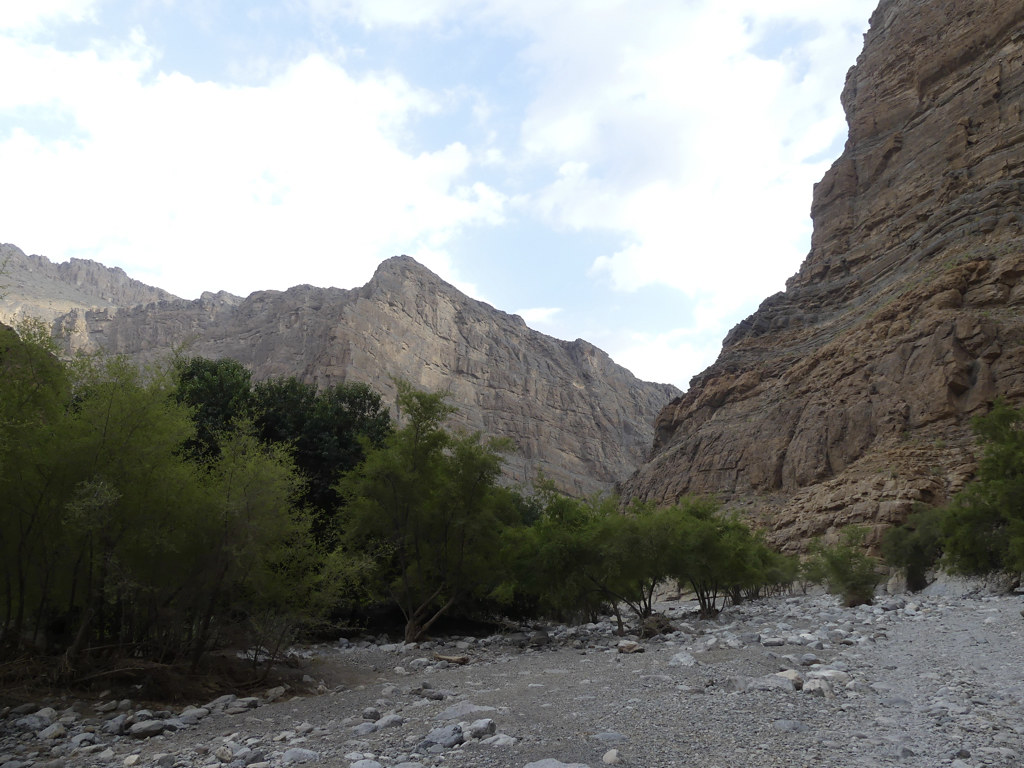

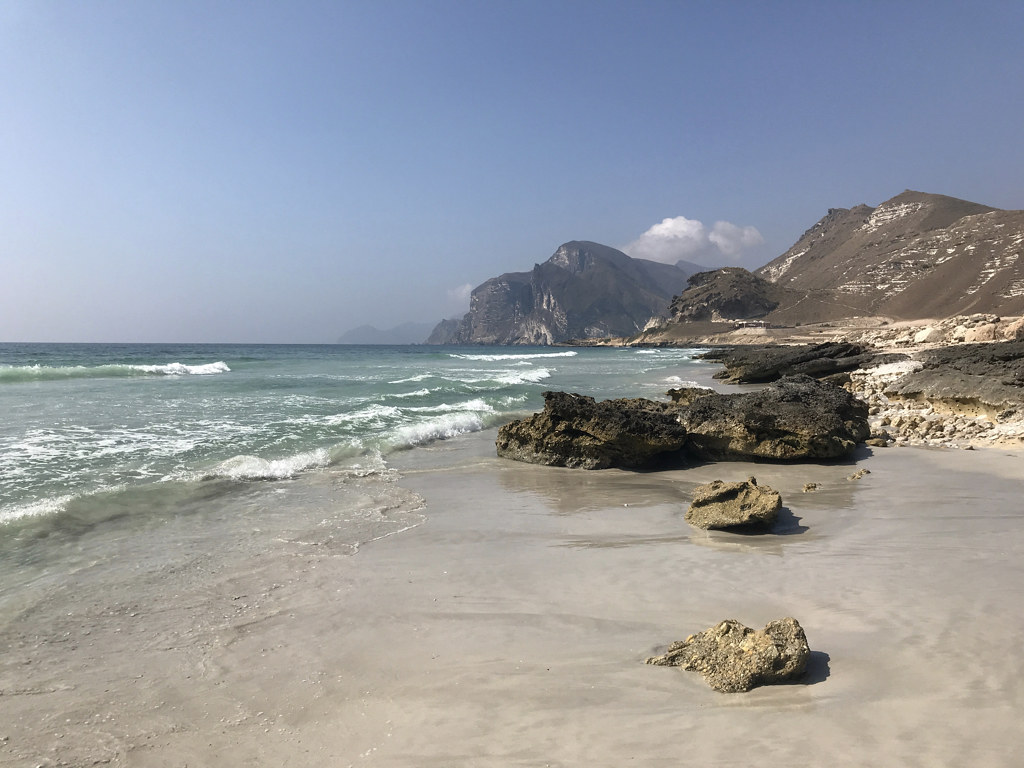








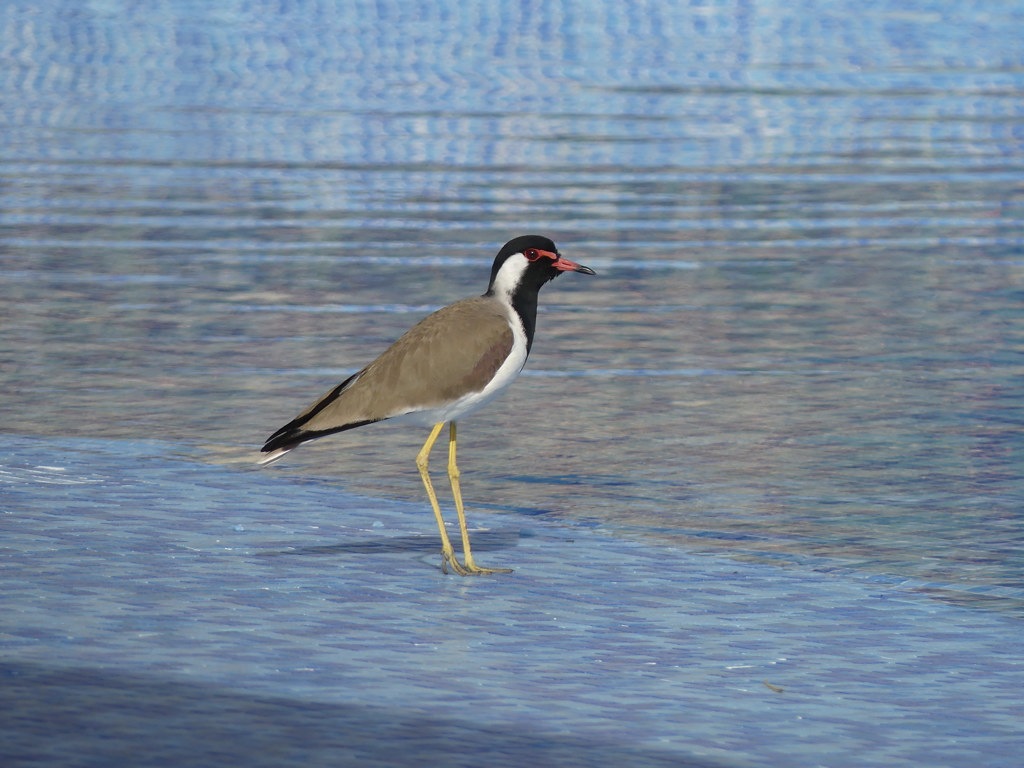








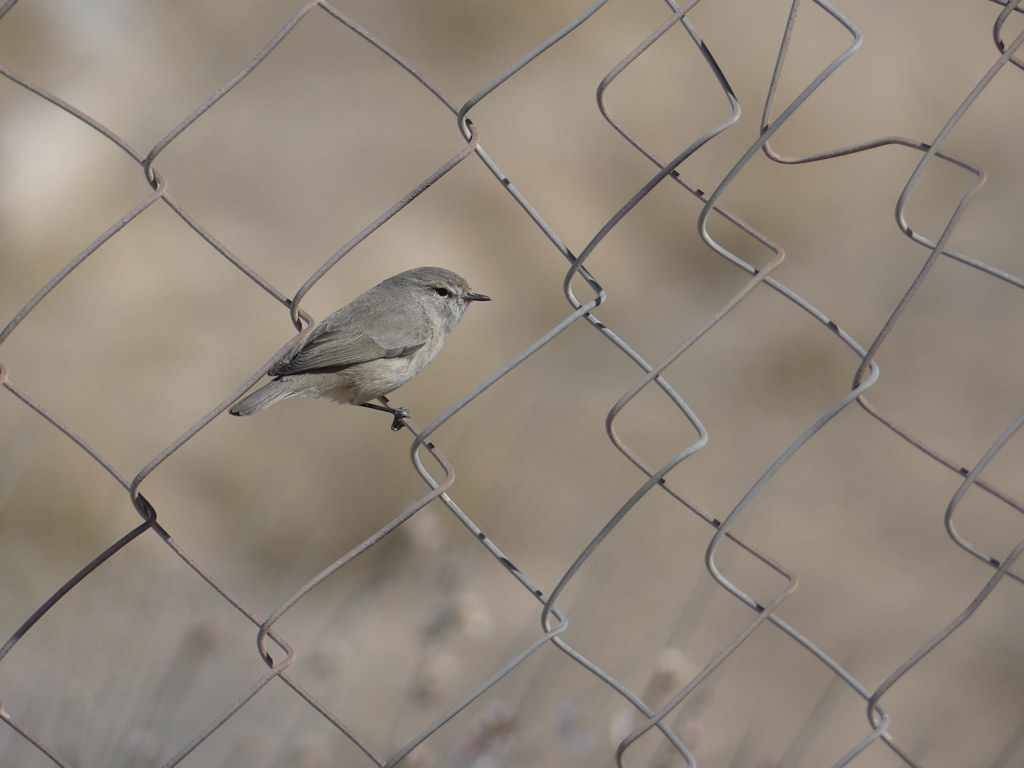


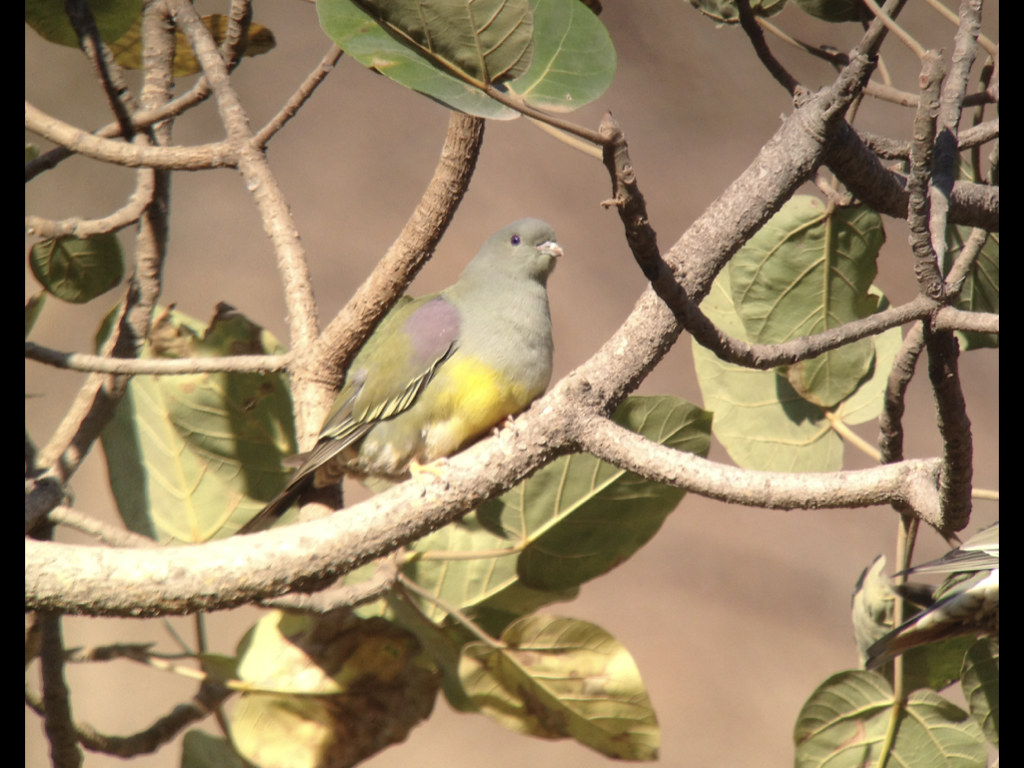



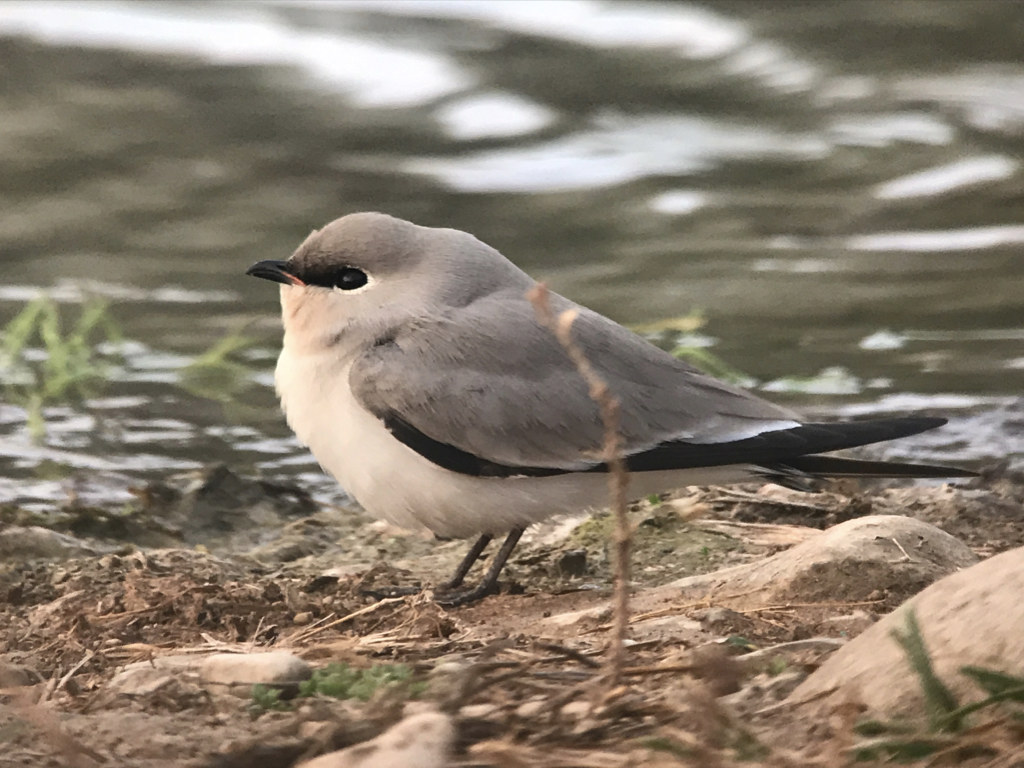


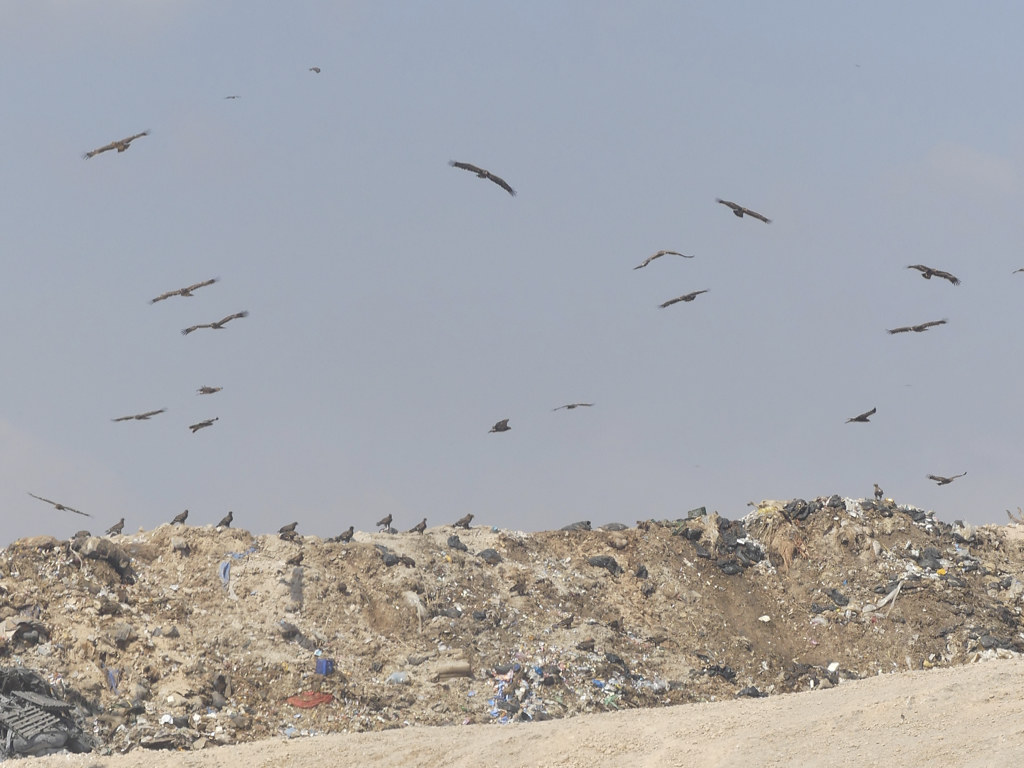
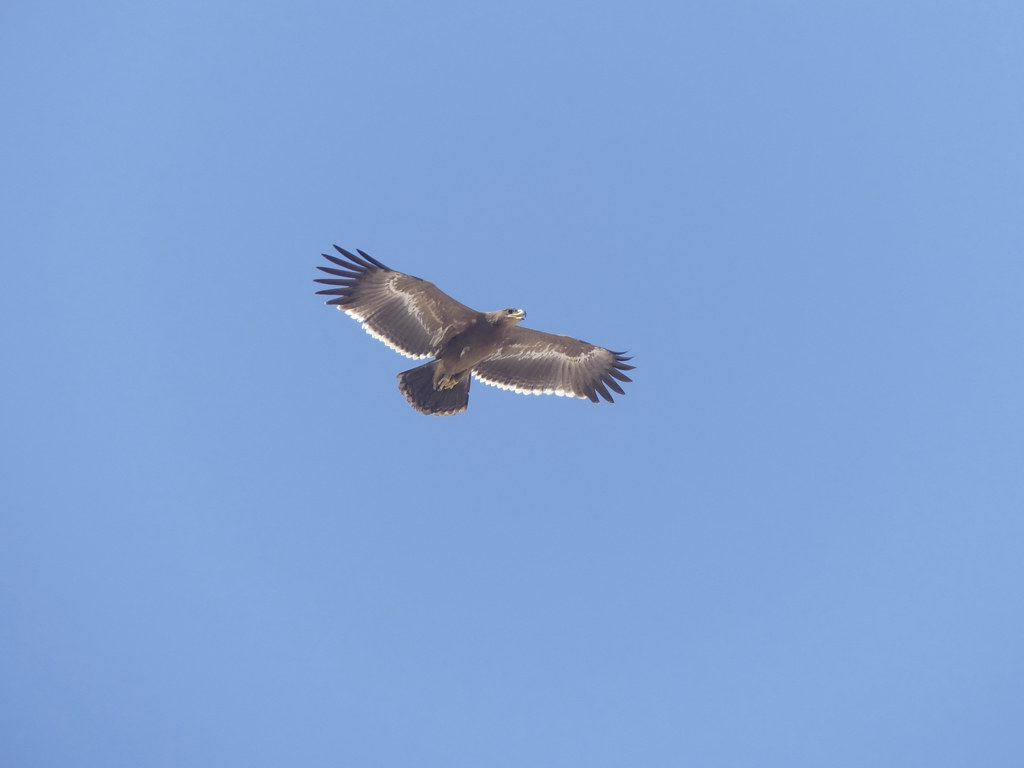



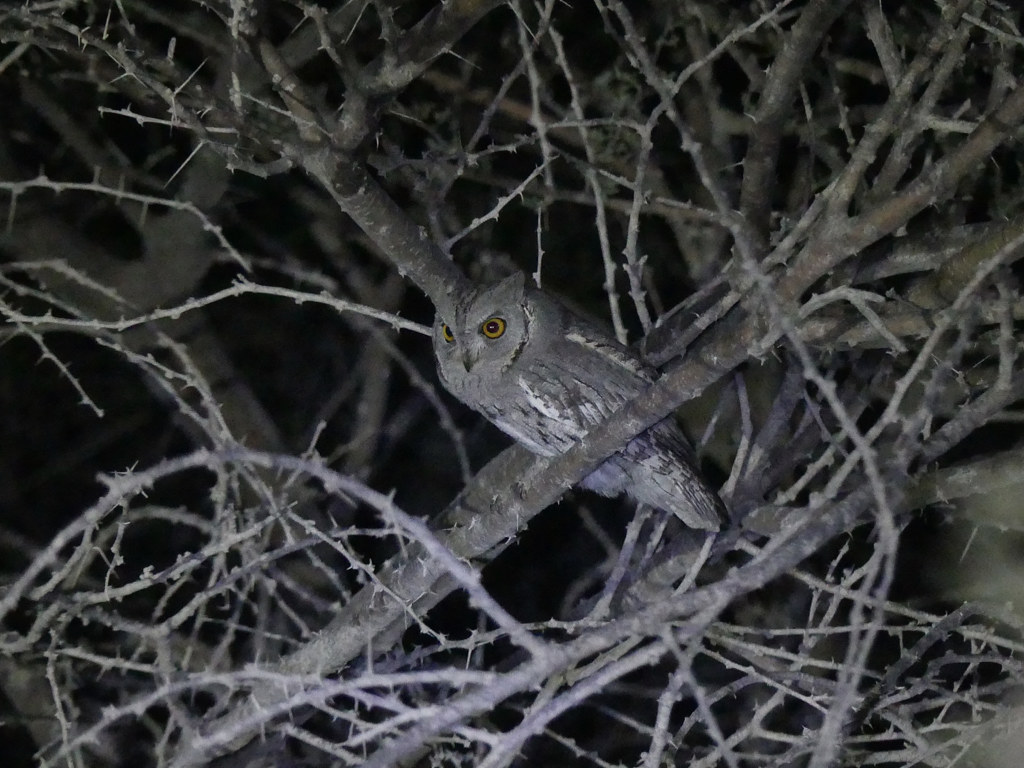










































-400.jpg)
